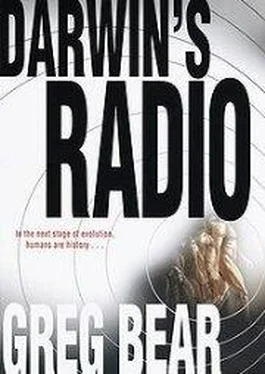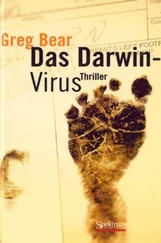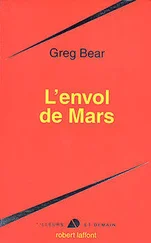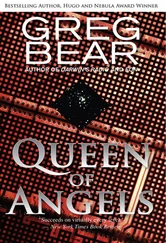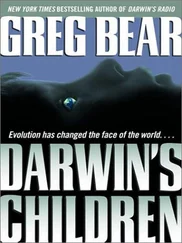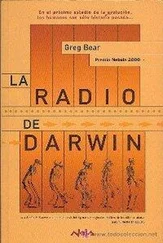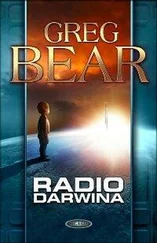Dicken suppressed a smile. The thought of the surgeon general faking a headache was precious.
Augustine fixed his gaze on Dicken. “All right, you smell something, go get it. Check miscarriage records in U.S. hospitals for the last year. Threaten Turkey and Georgia with exposure to the World Health Organization. Say we’ll accuse them of breaking all our cooperation treaties. I’ll back you. Find out who’s been to the Near East and Europe and come down with SHEVA and maybe miscarried a baby or two. We have a week, and if it’s not you and a more deadly SHEVA, then I’m going to have to go with an unknown spirochete caught by some shepherds in Afghanistan…consorting with sheep.” Augustine mocked a hangdog expression. “Save me, Christopher.”
13
Cambridge, Massachusetts
Kaye was exhausted, felt like a queen, had been treated for the past week with the respect and friendly adoration of colleagues saluting one who has after some adversity been recognized as having seen farther into the truth. She had not suffered the kind of criticism and injustice others in biology had experienced in the last one hundred and fifty years — certainly nothing like what her hero, Charles Darwin, had had to face. Not even what Lynn Margulis had encountered with the theory of symbiotic evolution of eucaryotic cells. But there had been enough -
Skeptical and angry letters in the journals from old-guard geneticists convinced she was chasing after a wild hair; comments at conferences from faintly superior, smiling men and women convinced they were closer to a big discovery…Farther up the ladder of success, closer to the brass ring of Knowledge and Acknowledgment.
That was fine by Kaye. That was science, all too human and better for it. But then there had been Saul’s personal dustup with the editor of Cell, stalling any chance she had of publishing there. She had gone to Virology instead, a good journal, but a step down the ladder. She had never made it as far as Science or Nature. She had climbed a good distance, and then stalled out.
Now, it seemed, dozens of labs and research centers were eager to have her see the results of the work they had done to confirm her speculations. For the sake of her own peace of mind, she chose to accept invitations from those faculties, centers, and labs that had shown her some encouragement in the past few years — and in particular, the Carl Rose Center for Domain Research, based in Cambridge, Massachusetts.
The Rose Center stood on a hundred acres of pines planted in the 1950s, a thick forest surrounding a cubical lab building, the cube sitting not flat on the earth but elevated on one edge. Two floors of labs lay underground, directly beneath and to the east of the elevated cube. Funded in large part by an endowment from the enormously wealthy Van Buskirk family of Boston, the Rose Center had been doing molecular biology for thirty years.
Three scientists at Rose had been given grants by the Human Genome Project — the massive, heavily funded, multilateral effort to sequence and understand the sum total of human genetics — to analyze archaic gene fragments found in the so-called junk regions of human genes known as introns. The senior scientist managing this grant was Judith Kushner, who had been Kaye’s doctoral advisor at Stanford.
Judith Kushner stood just under five and a half feet high, with salted and twisted black hair, a round, wistful face that seemed always on the edge of a smile, and small, slightly protuberant black eyes. She was known internationally as a true wizard, someone who could design experiments and make any apparatus do what it was supposed to do — in other words, to fashion those repeatable experiments necessary to make science actually work.
That she spent most of her time nowadays filling out paperwork and guiding grad students and postdocs was simply the way of modern science.
Kushner’s assistant and secretary, a painfully thin young redhead named Fiona Bierce, led Kaye through the maze of labs and down a central elevator.
Kushner’s office lay on the zeroth floor, below ground level but above the basement: windowless, concrete walls painted a pleasant light beige. The walls were crammed with neatly arranged texts and bound journals. Four computers hummed faintly in one corner, including a Sim Engine supercomputer donated by Mind Design of Seattle.
“Kaye Lang, I am sopmud\” Kushner got out of her chair, beamed, and spread her arms to embrace Kaye as she entered. She gave a little squeal and waltzed her former student around the room, smiling in professorial joy. “So tell me — who have you heard from? Lynn? The old man himself?”
“Lynn called yesterday,” Kaye said, blushing.
Kushner clasped her hands together and shook them at the ceiling like a prizefighter celebrating victory. “Wonderful!”
“It’s really too much,” Kaye said, and at Kushner’s invitation, took a seat beside the Sim Engine’s broad flat display screen.
“Grab it! Enjoy it!” Kushner advised lustily. “You’ve earned it, dear. I saw you on television three times. Jackie Oniama on Triple C Network trying to talk science — wonderfully funny! Is she so much like a little doll in person?”
“They were all very friendly, really. But I’m exhausted from trying to explain things.”
“So much to explain. How’s Saul?” Kushner asked, doing well to hide some apprehension.
“He’s fine. We’re still trying to pin down whether we’ll be going into partnership with the Georgians.”
“If they don’t partner with you now, they have a long way to go before they can become capitalists,” Kushner said, and sat beside Kaye.
Fiona Bierce seemed happy just to listen. She grinned toothily.
“So…” Kushner said, staring at Kaye intently. “It’s been kind of a short road, hasn’t it?”
Kaye laughed. “I feel soyoungl”
“I am so envious. None of my crackpot theories have gotten nearly as much attention.”
“Just gobs of money,” Kaye said.
“Gobs and gobs. Need any?”
Kaye smiled. “Wouldn’t want to compromise our professional standing.”
“Ah, the big new world of cash biology, so important and secret and full of itself. Remember, my dear, women are supposed to do science differently. We listen and slog and listen and slog, just like poor Rosalind Franklin, not at all like brash little boys. And all for motives of the highest ethical purity. So — when are you and Saul going to go public? My son is trying to set up my retirement account.”
“Probably never,” Kaye said. “Saul would hate reporting to stockholders. Besides, we have to be successful first, make some money, and that’s a long way down the road.”
“Enough small talk,” Kushner said with finality. “I have something interesting to show you. Fiona, could you run our little simulation?”
Kaye moved her chair to one side. Bierce sat by the Sim Engine keyboard and cracked her knuckles like a pianist. “Judith has slaved on this for three months now,” she said. “She based much of it on your papers, and the rest of it on data from three different genome projects, and when the word came out, we were ready.”
“We went right to your markers and found the assembly routines,” Kushner said. “SHEVA’s envelope, and its little universal human delivery system. Here’s an infection simulation based on lab results from the fifth floor, John Dawson’s group. They infected hepatocytes in dense tissue culture. Here’s what came out.”
Kaye watched as Bierce played back the simulated assembly sequence. SHEVA particles entered the hepatocytes — liver cells in a lab culture dish — and shut down certain cellular functions, co-opted others, transcribed their RNA to DNA and integrated it into the cells’ DNA, then began to replicate. In brilliant simulated colors, new virus particles formed naked within the cytosol — the cell’s streaming internal fluid. The viruses migrated to the cell’s outer membrane and pushed through to the outside world, each particle neatly wrapped in a bit of the cell’s own skin.
Читать дальше
Конец ознакомительного отрывка
Купить книгу
